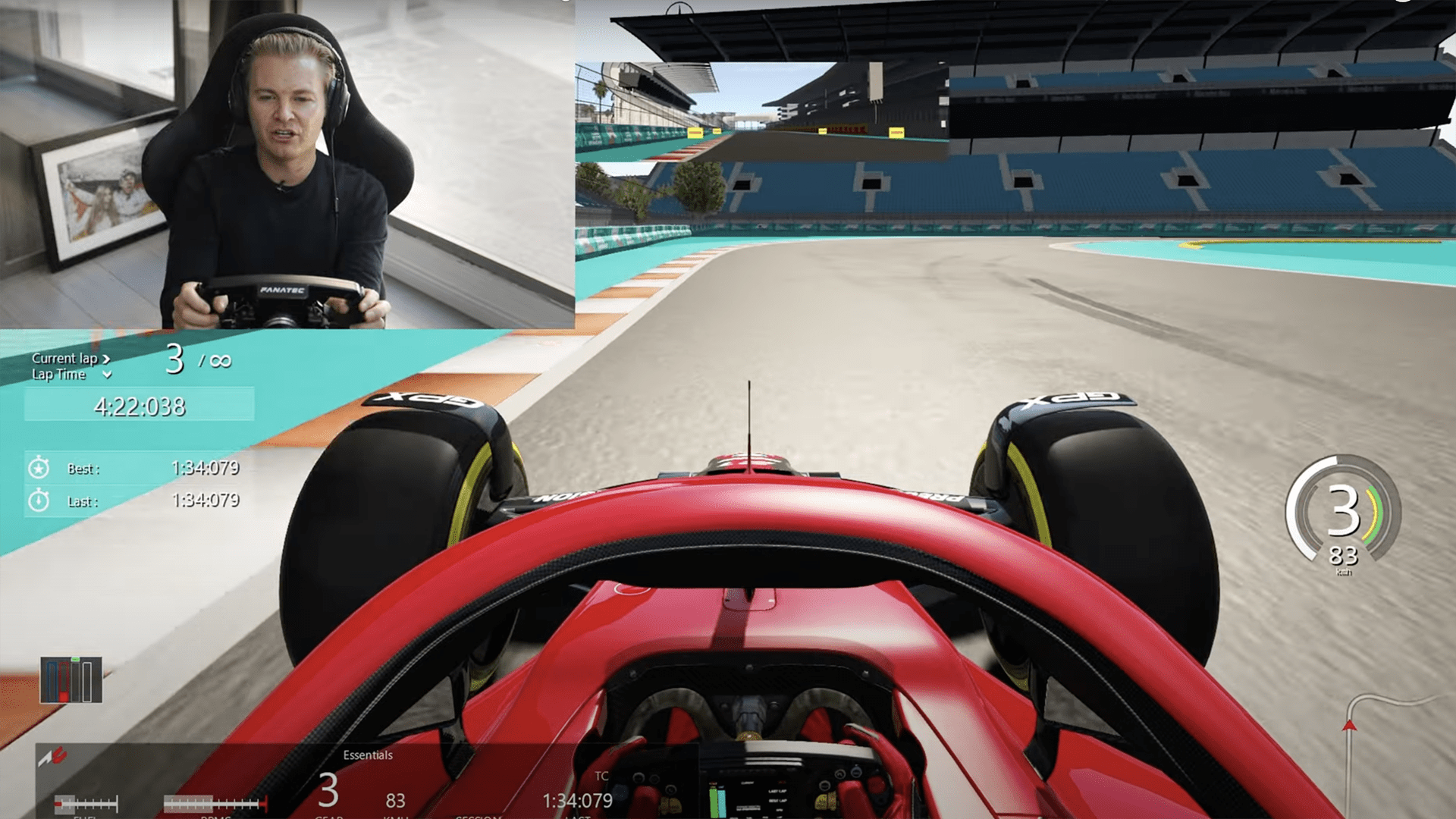

Every Formula 1 driver is at an equal disadvantage at this weekend’s Miami Grand Prix. That’s because nobody’s done this track before; as an all-new track and all-new race, nobody in F1 has competed at this course until now. It’s a new experience for fans, too, as we all get our bearings around a completely unfamiliar circuit. What should you know about how drivers will navigate this new “hybrid” track around the Miami Dolphins’ Hard Rock Stadium? Well, F1 world champion Nico Rosberg has some ideas of his own.
I should let you know, dear reader, that I had every intention of walking the entire track, taking photos, and putting together some kind of turn-by-turn guide. But a few things didn’t line up to make that happen, and let’s face it; Rosberg is better at this stuff than I am. And at this point in my life, I’m OK with that.

In his latest video, the former Mercedes driver-turned YouTuber takes to his sim racing rig to break down how the Miami course works, how he thinks drivers can best navigate each corner, and he gives us a little bit of what to expect come Sunday. “It’s fast,” Rosberg said. “Wow, it’s really, really fast. It’s challenging. You can really overtake while you’ve got some big straights into hairpins.”
About three minutes in and after his initial lap, Rosberg takes us through each corner, and while he’s no longer an F1 driver himself, I think we can fairly safely call this expert analysis. Drivers start on a long straight before coming to a corner, not unlike Qatar’s first, almost a hairpin but not quite, followed by a series of increasingly tightening S-curves. That’s followed by another long straight—there are several in Miami, possibly because this is America, and we love us some straight-line speed in this country—rife with overtaking opportunities. After the slowest part of the track, a very tight S-curve, drivers will go into a massively long straight that’s basically going to be a mean drag race. Rosberg says drivers will go well over 200 mph before having to brake at 110 meters before the apex—it’s like “going into a wall,” he says. After that, it’s a flowing section into the main straight again.

Rosberg later notes that he’s using a simulator, of course, so it’s hard to gauge the exact levels of grip drivers will face for real given the new asphalt. Speaking of simulators, he later says that before they even got here, drivers will have spent time in the simulator; a pro like Lewis Hamilton will have done a few hours’ worth, but younger drivers have probably spent several days trying it out in virtual form.
The new track hasn’t been without some issues so far, of course. Before Friday’s qualifying even started, repairs had to be made overnight to the asphalt after it took a beating from various safety cars, medical cars and demo runs. And during FP2 on Friday, Ferrari’s Carlos Sainz spun out around Turn 13 into a wall and badly damaged his car. Plus, it’s been on-again, off-again raining in Miami all week; if this track ends up getting wet on Sunday, we could be in for some very real racing—even if that marina happens to be fake.
Contact the author: patrick@thedrive.com.